The lesser-known types of Japanese beef and where to get them
Not all wagyu is made equal
We all love our wagyu. But with the myriad of types and grades of Japanese beef out there, it can all get a little confusing sometimes. Here are some of the more unknown cuts (with some more regular ones thrown in) you should know about and where you can try them in Singapore.





Advertisement
Fans of the old Itadakimasu, which opened and closed in Marina Bay in 2014, will be glad to know that they’ve reopened at Tanjong Pagar’s 100AM. The place will house seven Japanese restaurants serving the requisite classics, such as ramen, shabu shabu, soba, sushi and more. Out of the seven restaurants, three made their Singapore debut. Here’s what you can find at the renewed Japanese food enclave.



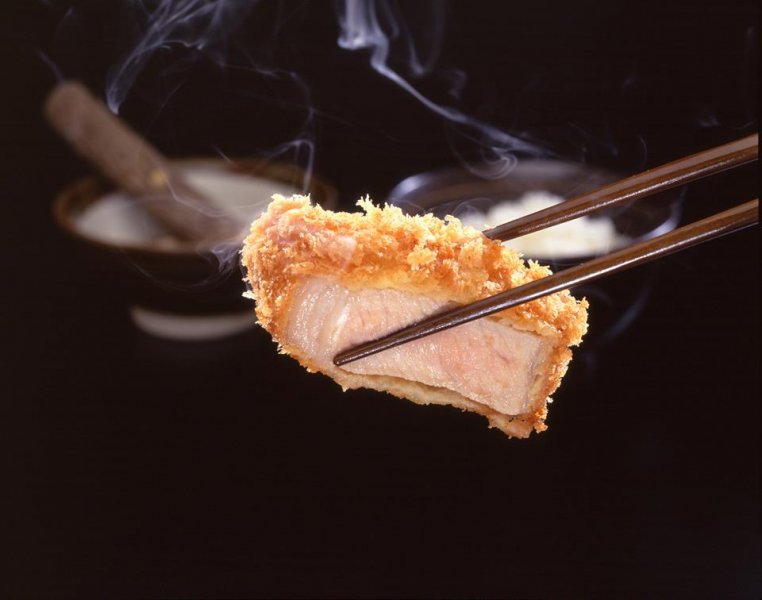
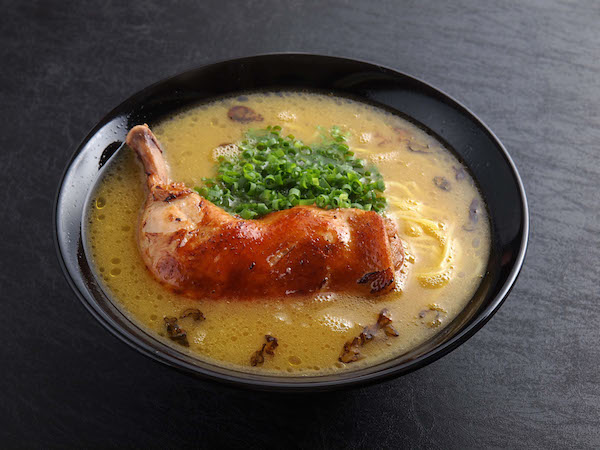

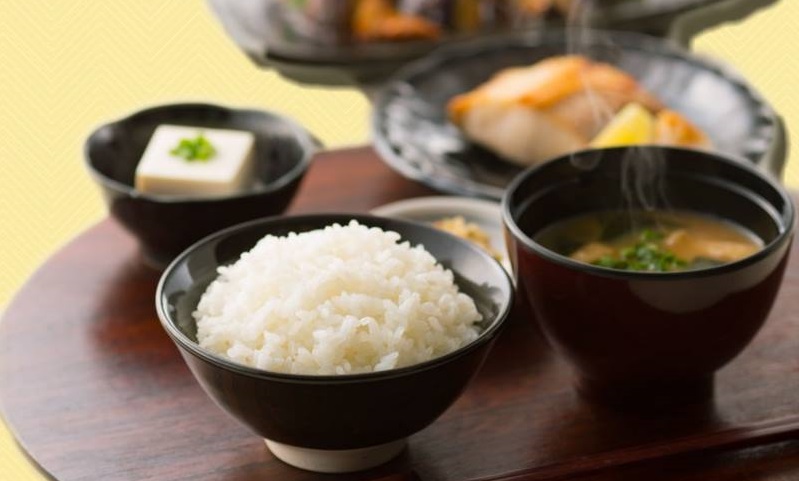
Advertisement
Ippoh Tempura Bar by Ginza Ippoh
The newest tempura restaurant to hit Singapore’s Japanese dining scene is also the one with the longest history. Ippoh Tempura Bar, located at lifestyle destination COMO Dempsey, is opened byGinza Ippoh, a family-owned tempura restaurant that traces its roots back to Osaka in 1850. Currently keeping up the culinary tradition is a fifth-generation member of the founding family, Chef Masaru Seki. At Ippoh Tempura Bar, lightly-battered Osaka-style tempura is cooked in prime safflower oil, so that it retains a lightness, allowing the true flavors of the premium seasonal ingredients to shine.
Advertisement
One of the ways Japanese celebrate the arrival of spring is to feast on fresh seasonal flavors. Various buds and sprouts that survived the harsh winter are harvested during this season. Sakura-like pink-fleshed seafood become available too and are both a feast for the eyes and your palate. Here are some of the best seasonal specials that you can enjoy right here in Singapore.
Advertisement
First things first, in Japan, sake refers to alcohol. What many non-Japanese think of as sake is actually nihonshu – an alcoholic fermented rice beverage – that for the record, isn’t rice wine. We chat with sake professionals about all things nihonshu.
Mind your P’s and Q’s
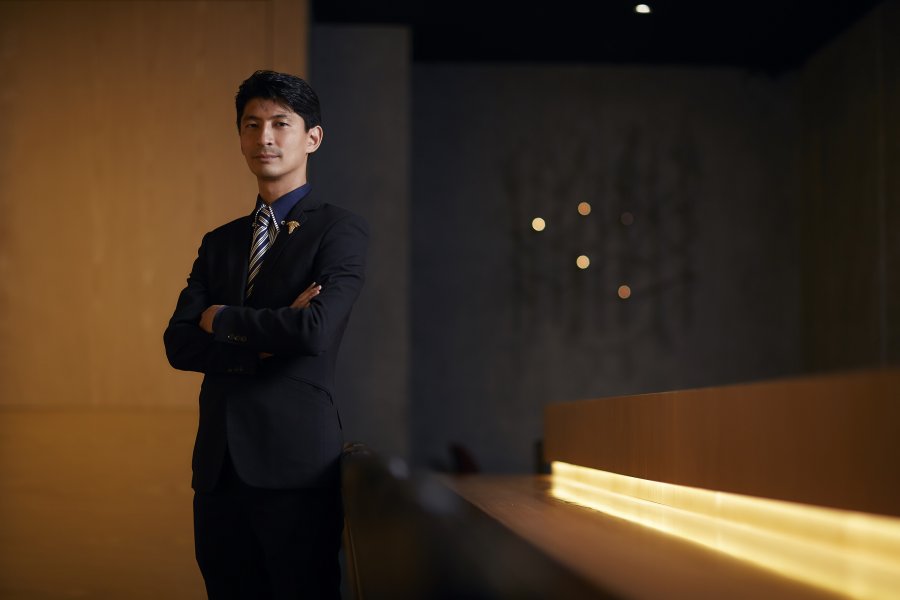 Daisuke Kawai
Daisuke Kawai
We know you’ve been wondering about this, and to answer your question, yes, there is indeed sake drinking etiquette. In Japanese culture, it’s a nice gesture to pour sake for the people you're with. Drinking sake with someone is very much about nurturing that relationship, says Daisuke Kawai, Chief Sommelier and Co-founder of La Terre.
Context is important
There isn’t a one size fits all answer when it comes to sake. Maria Luisa Satoh, Sake Sommelier/Senior Sales and Marketing Manager of Orihara, explains: In Japan, they always consider the situation, food, and season, when deciding on the type of ochoko (cups), tokkuri (flask) and temperature to serve sake.
For example, when in a traditional sushi restaurant, Kawai prefers glass ochoko and tokkuri for chilled sake, and ceramic ochoko and tokkuri for warm sake. However, if he’s in a modern Japanese establishment, he opts for wine glasses instead.
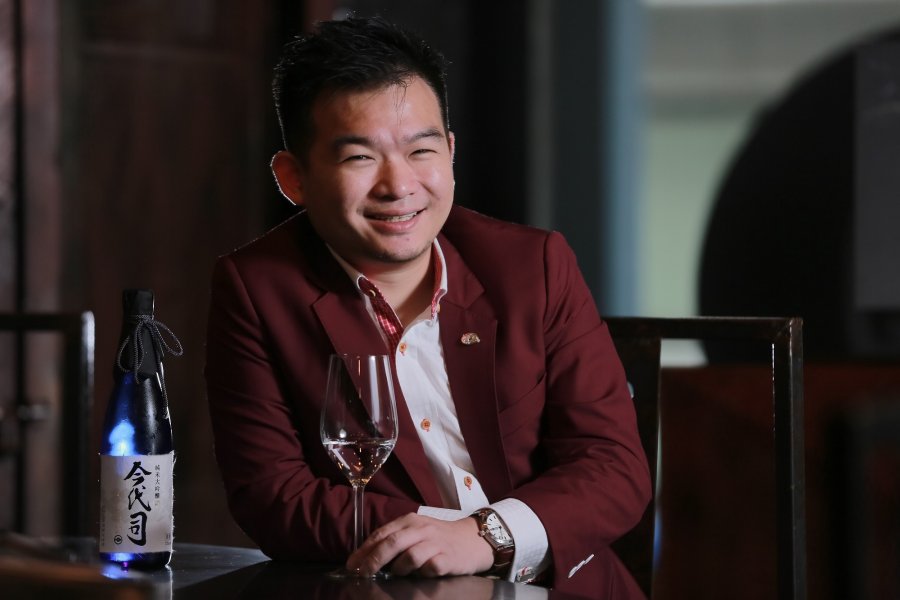 Adrian Goh
Adrian Goh
Interestingly, Makoto Iwabuchi, Ki-sho’s Master Sake Sommelier, always uses non-traditional wine glasses to serve nihonshu. Meanwhile, Adrian Goh, Sake Sommelier/Marketing Director of Inter Rice Asia, is a champion of sake being served in wine glasses. Modern sake has diverse and interesting aromas. Using wine glasses allows the consumer to appreciate the complex aromas more easily.
Some like it hot
According to Goh, different sake styles suit different temperatures. If you aren’t sure, the easiest thing to do is to refer to the brewer’s recommendation on the back label of the bottle. His rule of thumb: Light, aromatic sake like ginjo is better chilled (around 11-15 degrees Celsius), while sake with more acidity and body like junmai tend to fare better between 16-20 degrees Celsius.
Choices, choices, choices
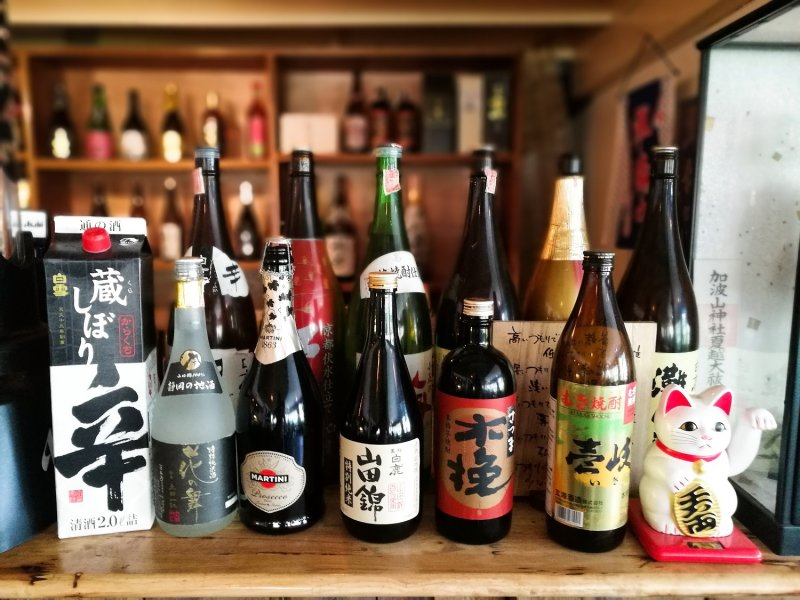 Different types of sake
Different types of sake
Don’t feel intimidated by the numerous sake options out there. To get you started, Kawai offers some advice if you’re usually more of a wine drinker. Like Riesling? Then try junmai gingo as it tends to be fruit-forward and floral with a banana-like aroma. Into bold Australian Shiraz? Give genshu a shot. It has a stronger flavor and punch, thanks to its higher alcohol percentage (about 16-19%). Fancy natural wines? Pick a namazake. This unpasteurized style of sake usually has a raw quality to it yet still has a smooth, soft mouthfeel.
Be adventurous
Pairing Japanese food with sake may be the norm, but don’t be afraid to experiment. Iwabuchi suggests ginjo with fresh cheese like mozzarella as the fruity element of ginjo balances the cheese’s lightness, while strong-tasting, hard cheese enhances the umami quality of yamahai sake’s rich, complex flavor.
Goh feels that aromatic junmai daiginjo works well with white fish, scallops, green salads, and prosciutto melon; refreshing honjozo pairs nicely with sashimi, tofu, yakitori, prawns, dumplings, and wanton mee; rich junmai complements red meat dishes, bouillabaisse, and squid ink pasta; aged sake matches with broiled eel, foie gras, peking duck, and even tandoori chicken.
Advertisement
There may be a myriad of top-notch chefs from Japan who have set up shop here in Singapore, but some of them have clearly managed to stand head and shoulders above the rest. While some were already renowned before coming to our shores, others gained a loyal following through sheer proof of their culinary chops. Here are the names of some who have earned their accolades.

Tetsuya Wakuda, chef at Marina Bay Sands’ hot ticket Japanese restaurant Waku Ghin, is best known for his world famous namesake establishment Tetsuya in Sydney. He first arrived in the Australian city from Hamamatsu — a town in Honshu in the Shizuoka prefecture — at the age of 22. He got a job at eatery Fishwives in Surry Hills and soon fell in love with the food and the country. Slowly working his way up, he eventually became one of the best known chefs Down Under. He then opened Waku Ghin here in 2010, which won a star in Singapore's first-ever Michelin guide in July 2016.
Kenjiro Hashida of Hashida Sushi Singapore

Kenjiro Hashida (fondly known as Hatch) helms the kitchen of omakase fine dining establishment Hashida Sushi Singapore, which has recently undergone a relocation and facelift. Hatch, having trained under his father who is one of Japan’s master sushi chefs, begin his training as soon as he was old enough to step into the restaurant at age 12. He recalls his father training his palate by constantly having surprise blind tastings with a little monetary reward given if Hatch guessed the food correctly. After deciding to further his career as a sushi chef, he worked tirelessly alongside his father full-time. Despite many offers to set up shop in USA and Shanghai, he chose Singapore for its exciting mix of cultures and a robust dining scene.
Asai Masashi of Bincho at Hua Bee

Helming the space made famous by filmmaker Eric Khoo's Mee Pok Man (1995) is Asai Masashi, the mastermind behind Bincho at Hua Bee. He moved to Singapore 14 years ago looking for new experiences, after training at the well-known Abeno Tsuji Culinary Institute and having worked at establishments in Hyogo, Osaka and Kyoto. Masashi’s cooking style here is influenced heavily from growing up in the Hyogo Prefecture, an area known for quality produce. That is why the cuisine at Bincho has a light touch and avoids heavy seasoning to allow the natural flavor of food to shine.

It’s not surprising how Kazuhiro Hamamoto got onto the food scene, especially since he’s been religiously following the Japanese television cooking show Iron Chef, produced by Fuji Television, since he was 12 years old. Naturally, he started working at a Japanese restaurant in his teenage years and enrolled himself to Kyoto’s culinary arts college at 17. There, he worked at various high-end establishments before deciding to hit the international culinary scene to broaden his skills and experience, and has since been in Singapore for the past eight years. He moved here because he landed himself a job at the prestigious Waku Ghin before helming Ki-Sho. Equipped with the skills and knowledge of Kyoto cuisine, he instils his own personal touches in terms of taste and presentation to make them truly unique to Ki-Sho.

Hal Yamashita was born in a port city in Kobe. The confluence of cultures in his hometown meant Yamashita was exposed to spices, scents and food produce from all over the world. From a young age, he enjoyed tasting new food and recreating dishes for himself. His early exposure to global influences helped him develop a distinct brand of nouvelle Japanese cuisine. He now helms numerous award winning restaurants including Nadaban Dining in Kobe and Hal Yamashita in Tokyo, and of course Syun, located at Singapore’s Resorts World Sentosa. Here, his dishes still focus on seasonal produce sourced near his hometown such as from Awaji Island and Tanba.
Advertisement
There is no dearth of Japanese celebrity chefs in Singapore, but so beloved is the cuisine to the Lion City, even locals are taking up the cause. Among Singapore most popular Japanese restaurants are a handful started by Singaporeans—can you think of any? Here we profile the local heros behind some of our favorite places.

Purveyor of delicious pork burgers on Circular Road since 2014, since before they became so ubiquitous in Singapore, Dojo is a mecca for the pork-obsessed who are also on a budget. Over a dozen pork-heavy burgers aside, Dojo also serves Japanese-style rice bowls and contemporary fusion fare like seaweed fries. And who better to helm it all than restaurant founder Janice Tan, whose love of pork comes from her family. Her grandfather is a pig farmer, her father is a real foodie and her mother is a great cook. They helped her learn to handle and prepare pork. She’s now an analytical cook who takes special care to enhance the sweetness of the dishes at Dojo. All sauces and marinades are made from scratch, in-house.

Aaron Yeo and Clarence Yau of Waa Cow!
Once a fixture on NUS’s Kent Ridge campus, the 60-seat Waa Cow! Now at Stephen Riady Centre is still beloved for its industrial-chic décor and it’s affordable poke bowls, superfood salads and more. Behind this enterprise are Aaron Yeo and Clarence Lau, who found their passion for the food business early. They ran a café at Singapore Management University (SMU) while completing their undergrad degrees. Despite brief stints in the corporate sector, they found their way back to F&B. They also founded artisanal kaya company Social Food Co. and started Japanese venture Waa Cow. When not at work making food, the guys behind Waa Cow! also do a good amount of eating out and are ever ready with restaurant recommendations. They recommend Shiraishi, a pioneer in the local Japanese food scene. Yeo says, “ Shiraishi was there long before the superstars like Hashida came to Singapore, and that was where I got my first omakase experience. It blew my mind.” They also like the chirashi don lunch set at Aoki.
Like what you see? The Bite! Japan website and Facebook page are both packed with Singapore's best places to try Japanese food, the best of Japanese sake, whisky and craft beer, upcoming promotions and lots more. Follow us!

The sexy new opening behind Amoy Street is as well regarded for its food as it is for its date night vibes. The charred corn, uni, dehydrated soy and chive dish has got to be one of the best things we have tasted in the past few months. And the man behind it is Singaporean chef Jeremmy Chiam, who also has a two-year stint at the acclaimed Iggy’s under his belt. The fine dining temple taught him an appreciation for French-Japanese cuisine, where modern cooking techniques are used to highlight the beauty of Japanese ingredients. This is what he tries to bring across at Le Binchotan. “ I go for simplicity,” he says. “ The maximum number of components in any of my dishes is three or four as I prefer to let the ingredients speak for themselves.”

The word kanshoku means “ to finish eating every last bit of your food” in Japanese. And that’s exactly what you’ll want to do at this ramen bar by Melvin Ang. Put aside all expectations, and get ready for some amazing twists on everyone’s favorite Japanese comfort food: black garlic, truffle, to name just a couple. But that doesn’t mean there isn’t deep traditional knowledge behind every bowl. When deciding to make a career switch into F&B, Ang—who was completely untrained as a chef—figured that while making ramen is a long process, taking over 12 hours, it is also one that he could master. That’s how he decided to master the dish, putting months into travelling, researching and learning from various chefs, before heading into the kitchen himself. While Kanshoku breaks conformity with its different flavors, Melvin is extremely meticulous about the process. He puts in the hours, uses the best imported ingredients and has no qualms about investing in a costly ramen-noodle making machine to ensure utmost quality. The result is a beloved and slowly growing empire.

A beloved place for super porky ramen in the CBD, Buta Ramen offers plenty of decadent twists—the sous-vide teriyaki glazed ribs aside, the most popular dish is the Spicy Chilli Boss Rib Ramen, followed by the creative Beer Belly Ramen, where the already rich tonkotsu broth gets a kick of beer. The inventive dude-food chef behind the menu here are co-founders John Ng and Sandy Yeo, who first started out as multimedia designers. But their love for meat prevailed, and they decided to pursue the food business. They started to brainstorm potential opportunities for starting their own empire, involving a creative and visionary take on a dish. This was where the concept of ramen and ribs was born. Sandy is adamant on value for customers, and ensures that portions are generous. Besides the special element of ribs, Sandy has tailored the ramen flavors to suit the local Singapore palate: the broth is less salty than its traditional counterpart, and side dishes like the grilled kakuni buns prove to be a hit with locals, as they are very much like Singapore’s very own kong bak pau.
Advertisement
A cornerstone of Japanese cuisine decadence is all the premium wagyu beef. Here, we’ve rounded up some of the prettiest, fanciest Japanese beef dishes available in Singapore, for you to check off your list. From simply slide yakiniku platters to fussed-over small plates, here are the ones we’re salivating over.

Get it at: Wagyu kaiseki specialist Ushidoki, which sources its wagyu from Miyazaki prefecture
Ushidoki chef Nobuaki usually starts his kaiseki menus with a cold dish, and if you’re lucky it will be the oyster and beef sashimi. Each plate comprises a creamy French oyster topped with marinated beef and Spanish olive oil capsules. The dish is also decorated with Japanese maple leaves.

Get it at: Fat Cow, the self-professed “meat atelier” run by handsome young chef Fukashi Adachi
Like what you see? The Bite! Japan website and Facebook page are both packed with Singapore's best places to try Japanese food, the best of Japanese sake, whisky and craft beer, upcoming promotions and lots more. Follow us!

Get it at: Vivocity’s yakiniku specialist Tajimaya, whose fancy exhaust fans ensure you leave without smoke in your hair
Miyazaki Beef comes from Japanese black cattle bred and fattened in Miyazaki prefecture, where the warm climate and lush countryside are well suited to producing high quality beef. All Miyazaki beef is Grade 4 or above according to the meat quality grading standards. To enjoy the meat’s exquisite marbling (Tajimaya uses meat with a score of 7 to 8), Chef Michael Teng recommends the tenderloin cut.

Get it at: Duxton Road’s Niku Katsumata, which imports its high quality beef from Kagoshima and Kumamoto.
Some might be hesitant about raw beef but Taiki’s careful handling of the meats is comforting. The cut of meat used for the wagyu tartare changes from time to time but the rump cut gives a good bite. It is marinated in shoyu then topped with a quail egg yolk, some caviar and spring onions. The sashimi features inner thigh meat, whose sweetness comes through with each bite.

Get it at: Yakiniquest, a sexy but zen yakiniku restaurant that specializes in omakase-style barbecue
Niku Somen—raw wagyu sliced into thin “noodles”—is a top pick here. It is a light refreshing dish, with delicate flavors. Served in a small teardrop shaped bowl, the fine beef strips are doused in light dashi, matched with seaweed, grated yam and spring onions and served with a side of wasabi. The dish is an appetizer in the special omakase.

Get it at: Mandarin Gallery’s Ito-Kacho, whose amazing yakiniku offerings always involve using chilled—not frozen—meats
Air-flown in from Kagoshima, Kyushu, Japanese black wagyu is a top quality beef from cattle exclusively bred and fed a nutritious diet to achieve smooth meat texture. The lower melting point of their fat content gives rise to a finer marbling consistency, which makes the meat more robust in flavor. Get the ribeye cut, where balanced fat content allows you to taste the meat better.

Get it at: Tenkaichi, which not only has views of Marina Bay, it offers a best-price guarantee, offering to beat any similar buffet by 10 percent.
Wagyu tokujo karubi is a grade A5 finely marbled black cattle wagyu from Miyazaki prefecture, which offers an exquisite balance between meat and fattiness. Superbly tender and nuanced with clean and concentrated flavors and a near buttery texture, the beef is best enjoyed very lightly grilled.

Get it at: Osaka Kitchen, a local outpost of the well-known teppanyaki chain in Japan,
Grilled on the teppan until seared on the outside yet pinkish and tender on the inside, the ohmi wagyu beef steak is served with slices of fried garlic from Aomori, Tohoku, wasabi, mojio (seaweed salt) and daikon. Hideshi recommends eating the beef cubes with a smear of wasabi and topped with a slice of fried garlic and a sprinkling of mojio. Clean your palate with the daikon and then dig into another piece.

Get it at: French-Japanese fine dining establishment Lewin Terrace, housed in a beautiful white mansion in Fort Canning Park
Normal shabu shabu sees diners swishing pieces of thin-cut beef in hot broth. In order not to lose the meats’ fat and flavor into the broth, Matsumoto thought to use a siphon to extract the flavors of the vegetables into the bonito broth before pouring it over the thinly sliced Kagoshima Wagyu. To cut through the combined umami of broth and beef, he adds some Japanese mountain vegetables and wasabi gnocchi made using a special wasabi essence.
Plenty more where that came from. For more content on the best Japanese food in Singapore and regular updates, follow Bite! Japan on Facebook.
Advertisement
Easily Singapore’s most exhaustive and high-quality japanese food enclave, Japan Food Town at Wisma Atria brings together some of Japan’s most lauded restaurants, some with histories going back over 100 years, to bring Singapore the best udon, ramen, soba, mackerel, nabe and other specialties. But without a good guide, it’s easy to feel bewildered. Use this, and we’re sure you will keep coming back for more.

A famous authentic tonkatsu restaurant in Ginza, Tokyo, Anzu makes its first foray to Southeast Asia with fresh Kyushu produce and, for their signature light and crispy breaded pork cutlet, high quality oil at temperatures of 180-200°C.
Get this: The Anzu Set comes with three types of katsu: a daily changing pork cut, shrimp ball, and a vegetable variety—and chawanmushi and dessert.

Bar Nippon is Singapore’s first bar that specializes in fruit cocktails. The menu is thought up by Japanese mixologist Mizusawa Yasuhiko, who is renowned for concocting fruit-based cocktails at Bar Tiare in Tokyo. Here, the drinks are churned out by Hirofumi Yamamoto, who trained under Mr Yasuhiko for four years. As the bar only works with fresh, quality seasonal fruits like pineapples from Okinawa, red melons from Hokkaido, and Kyoho grapes, the menu changes every three to four months.
Get this: Featuring the sweet and juicy red melon from Furano Hokkaido, the melon cocktail also gets a dash of unfiltered Nigori sake, Advocaat, plus a house-made dashi syrup derived from seaweed, bonito and wasanbon Japanese brown sugar.

Rice takes center stage here. There is a dedicated rice sommelier, and only top quality kinmemai rice is used in the dishes here, including their signature onigiri that can be ordered for takeaway. The restaurant even uses bamboo charcoal to purify the water that they use to cook the rice.
Get this: What’s not to love about grilled freshwater eel with a special sweet-savory tare in the unagi kabayaki don? The unagi is served atop a bowl of rice and then topped with shichimi and white pepper, giving the dish a spicy kick.

Serving up delicious dishes prepared with this plethora of fresh seafood, quality beef, vegetables and dairy, Hokkaido Izakaya is the best place to sample a taste of the island without flying there physically. The Japan Food Town outlet is the second in Singapore, attesting to the popularity of Hokkaido fare.
Get this: The kakiage tempura soba arrives with a massive piece of kakiage studded with vegetables and prawns, covering up half of the already huge bowl of fresh soba noodles.
With a 150-year history, this Japanese udon specialist does special, handmade, thin udon noodles that take four days to prepare. Try them in their purest form, cold, with little more than two types of tare: soy sauce and goma. Udon aside, there is also a selection of sake to go with, and standard izakaya fare.
Get this: Bring a big appetite for this ultumate udon tasting: Tempura and Ajikurabe. You’ll get some cold udon, some hot udon in soup, served alongside two types of tare.
A local outpost of the well-known teppanyaki chain in Japan. Osaka Kitchen specializes in the cuisine of the Kansai region. Expect a variety of okonomiyaki and yakisoba, and there is even a seasonal eight-course chef’s menu The bar counter takes centerstage, where you can watch the chefs work their magic on the teppan.
Get this: This straightforward Japanese omelet with pork belly might feature rather simple ingredients but it showcases the teppan skills of chef Hideshi, cooking the egg that envelops the springy meat until suitably soft.
First opened in Ebisu, Tokyo in 1998, Rang Mang Shokudo has taken karaage to an art form. The fried chicken specialists use only carefully sourced free-range chickens and marinate them in a buttermilk bath for at least six hours to lock in the flavors in the meat. After coating the mean with batter made from top quality flour, Rang Mang Shokudo uses a signature double-frying, low-heat method for perfect crispiness.
Get this: Fried chicken overs should get the All-You-Can-Eat set, which lasts for 60 minutes, at just $48, and includes free-flow alcohol. Diners can choose five dipping flavors—out of a selection of 13—to accompany their heap of chicken.
Like what you see? The Bite! Japan website and Facebook page are both packed with Singapore's best places to try Japanese food, the best of Japanese sake, whisky and craft beer, upcoming promotions and lots more. Follow us!
Japan Food Town’s casual and bustling ramen specialist from Kanagawa prefecture does “home-style” ramen made to your specifications—choose how well-done you like your noodles, though note they make them nice and thick, fresh. Broth-wise, they run the gamut: shoyu, tonkotsu, shio, spicy miso and even a tonkotsu-shoyu mix.
Get this: The rich, Yokohama-style tonkotsu sio cha-shu ramen also comes with spinash, nori and quail egg.
Tokyo’s two Michelin-starred Seizan restaurant as a little modest omakase restaurant in Japan Food Town, specializing in nabe, or Japanese hotpot. Young chef Haruhiko Yamamoto worked at the Tokyo restaurant for five years before coming to Singapore and serves just one set for lunch and one for dinner.
Get this: Choose from three mains, such as the wagyu mabushi, the sea bream rice set and the start of the place, the wagyu nabe dashi. It comes with appetizers and dessert.
Decked in inviting shades of blue, the restaurant in Wisma Atria’s Japan Food Town is designed to resemble an English fish and chips shop, complete with informative murals detailing facts about saba fish, or mackerel, the place’s specialty. Sabar sources its premium fish from Aomori, Tohoku and offers them as sushi, sashimi, grilled, fried and even a la fish and chips.
Get this: The assorted toro saba sushi platter comes with three different types of sushi: shimesaba, where the mackerel is cured with salt and vinegar to give it a slight tang; torched aburi-style and with kombu seaweed for added umami; and grilled with a special marinade.
This restaurant has its roots in Hyogo prefecture, and the semi-buffet meals come with quality meats from Japan and Australia, as well as free-flow vegetables and home-made ice cream. Enjoy two Japanese hot pot styles—shabu shabu and sukiyaki. The restaurant also offers six different kinds of soup stock for their shabu shabu.
Get this: The deluxe Gyujin Course Shabu Shabu comes with Hokkaido wagyu beef chuck cut, pork ribs, pork loin, and chicken thigh meat. The restaurant also provides three different sauces to pair with the meats: ponzu, gomadare (sesame), and spicy gomadare.

This tempura specialist is small and warmly lit, with many little Japanese accents and an open kitchen. The menu here might be compact, with only four rice bowl options, but diners can choose to add on individual tempuras to their sets. To wash down your meal, the concise drinks menu features a selection of sake, Suntory whiskey highball and $8 half-pint Kirin draught beer.
Get this: The Tenka Special Tendon comprises three prawn tempuras, two regular vegetables, two seasonal seafood items—featured here are squid and yellowtail, and two seasonal vegetable items—zucchini and myoga (young ginger). The accompanying sauce is deliberately kept only moderately sweet.
The dining outfit is headed by executive chef Kawashima Eisaku, who trained under master chef Nanmoku Shinichi for 16 years at the flagship outlet of the same name located at Tsukiji. In the three decades that Takewaka has been at what is arguably the world’s most famous fish market, the team has forged a tight network with the local fishermen, suppliers, and wholesalers, affording the chefs access to some of the finest quality seafood.
Get this: Using wild caught saury directly shipped in from Hokkaido to preserve its freshness, Takewaka delicately grills the fish and prepares it in the form of traditional Edo-style sushi.
With 45 years of experience in authentic yakiniku, Heijoen prides itself on being beef connoisseurs. The highlight of the menu has to be the deluxe cuts of A5 Wagyu Beef directly imported from Kagoshima, but don’t be surprised to also find some Korean staples like kimchi, namul, or bibimbap on the menu.
Get this: The Housen assortment of premium beef in the Housen platter includes salted tongue, deluxe Heijoen lean beef, the premium cut of the day, chef’s choice steak cut, sirloin and premium Sankaku marbled meat.

This Tokyo soba eatery uses a mix of buckwheat flour from Yamanashi, Tochigi and Hokkaido for its made-fresh-daily noodles. To cater to local tastes, the soba noodles are rolled out thinner than in Japan, so that it becomes slightly softer when cooked. Yomoda Soba believes in healthy eating and uses no MSG in their food preparation. All dashi broths are made with natural ingredients.
Get this: The hot ebi tempura soba comes with five pieces of crispy and rich prawn tempura together with soba noodles and a simple dashi broth.
Advertisement
Newbies to the sublime realms of sushi and sashimi may be surprised to note that while tuna is among the top-grade options out there, there are actually over a half-dozen varieties of tuna, or maguro, eaten in Japanese cuisine. Before you head down to your next omakase, learn the difference between the main varieties, and a bit about the best cuts.
Even if you don’t know much about tuna, the arrival of donburi hot spot Kuro Maguro at Tanjong Pagar Centre has probably taught you that its star fish, the bluefin tuna, also known as kuro maguro and hon maguro, is the most prized of them all. It’s the fish you hear of selling for millions at Tsukiji auctions, thanks in part to its unbeatable combination of umami, acidity and amazing texture.
And while wild hon maguro caught around the seas of Japan, Ireland, Canada and the Mediterranean, the majority of bluefin tuna in Singapore comes from Japan.
Far from a supermarket sushi fish, the intensely red hon maguro is served raw, in sashimi form, never cooked, as that would compromise the meat’s natural meaty firmness. Hon maguro tends to be at its best in the cold months, when it packs plenty of that delicious, melt-in-your-mouth fat.
Bigeye tuna or mebachi maguro is also known as ahi, and is the next best thing. Mebachi lives deep in the ocean and therefore has plenty of fat, too, making it a good option for affordable sashimi. It’s relatively abundant in most tropical and temperate seas, so tends to be cheaper—you’ll probably also encounter it in supermarkets. Much of the mebachi maguro in Singapore comes fresh from Indonesia.
Not to be confused with yellowtail—known as Hamachi in Japanese—yellowfin tuna, or kihada maguro (strangely also known as as ahi in Hawaii), is a tropical fish, less fatty than hon maguro or mebachi maguro. While high-quality kihada maguro is good eaten as sashimi, it’s also common to find it seared and served rare.
Like what you see? The Bite! Japan website and Facebook page are both packed with Singapore's best places to try Japanese food, the best of Japanese sake, whisky and craft beer, upcoming promotions and lots more. Follow us!

Kuro Maguro
Types of tuna aside, there is a bunch of Japanese terminology for the various cuts of the tuna fish—which you will want to know as you explore the various breeds and fat contents.
The leanest part of the tuna fish—and usually the reddest—is called akami, and refers to the top part of the fish, just under the dorsal fin. Those simple tuna maki rolls with bright red fish in the middle? That’s akami.
Toro refers to the fatty—and more prized—part of the fish. You’ll want to know the two sub-varieties: chutoro is a medium-fatty cut that comes from the belly, is more pink than red and can have a slight marbling akin to beef. Otoro is the primo stuff, from the fattiest part of the belly, which melts on the tongue. It also happens to be packed with nutrients like omega-3 fatty acids. Naturally, not all otoro is the same—otoro from kihada maguro, for example, is not very fatty at all. The real prize is—you guessed it—otoro from hon maguro.

Sushi Mitsuya
Singapore has plenty of excellent, high-end sushi restaurants that will serve the best cuts of seasonal tuna. There are two, however, that specialize in tuna. The aforementioned donburi specialist Kuro Maguro brings its fish straight from the trawler, bypassing the market auction process, ensuring that the fish is fresh and as affordable as possible. Its sister restaurant at Suntec’s Eat at Seven, Maguro Donya, is also supplied by Misaki Megumi Suisan, and flies in fresh sashimi-grade fish daily.
At Anson Road's Kan Sushi, chef Nishina serves a Hokkaido kaisendon, featuring the freshest catch from Japan's most delicious island, everything from scallops to sea urchin to, you guessed it, maguro. And for something even more indulgent, try the chirashi teishoku at Marina Bay Financial Centre's Misaki, a 10-seafood extravaganza atop fluffy koshihikari rice, including shrimp, tobiko, crab claw, maguro and otoro.
For an ultra-luscious and decadent otoro dish, head to Sushi Mitsuya, where chef Ryosuke Harada lightly drapes a slice of fatty maguro belly around a miso-cured egg yolk for double the umami delight.
Plenty more where that came from. For more content on the best Japanese food in Singapore and regular updates, follow Bite! Japan on Facebook.
Advertisement